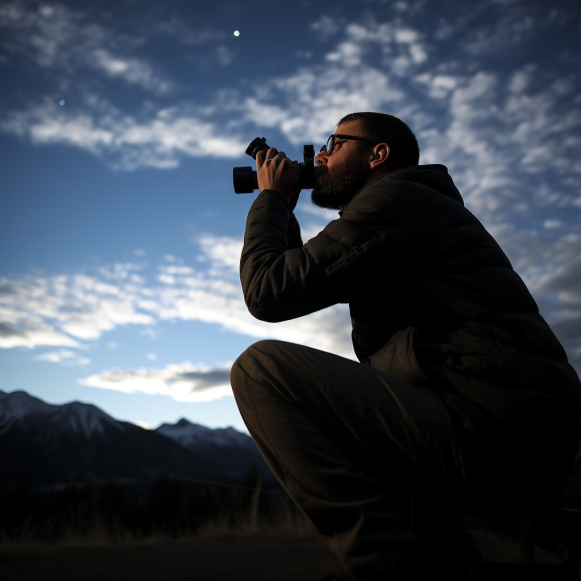No need for a telescope: The right binoculars can help amateur astronomers get started

Here are some suggestions from experts on what kind of stargazing binoculars to buy
If you’re fascinated by the night sky and want to see more than what the naked eye can see, you don’t need to spend hundreds or thousands of dollars on a fancy telescope. In fact, astronomy experts advise against it. At first, no.
They recommend starting with binoculars because they are less expensive.
Telescopes are more difficult to use, which means it takes time to learn how to use them and they can be difficult to transport. Binoculars are easier to use and can assist you in learning the fundamentals of the night sky. While they provide less magnification, they provide a wider view of the sky than narrow view telescopes. They can aid in the observation of nebulae, star clusters, and several planets, including Jupiter and some of its moons.
“It allows you to explore some of those things before you decide whether to invest in a telescope,” said Jeffrey Hunt, a retired Illinois planetarium director whose website When the Curves Line Up keeps track of interesting celestial events for amateur astronomers.”Learning the sky is one of the reasons for using binoculars — learning where the bright stars are, where the constellations are, and where some of the easier things to find in the sky are located.” Some are brighter than the stars, while others are just beyond the range of human vision.”
Hunt’s “go-to” binocular for astronomy is the 750, which magnifies objects seven times and has apertures that measure 50 millimeters in diameter. You should avoid 35-millimeter apertures because they let in far less light than 50-millimeter apertures.
Sorin (he goes by one name) of Mile High Astronomy in Lakewood also recommends 7x50s for beginning astronomers. Sorin charges $50 for an entry-level Celestron 750. Celestron is a manufacturer of binoculars and telescopes.
“This is more than enough for you to see Jupiter and its four major moons,” Sorin explained.
Some people prefer binoculars with a 10-fold magnification, but Hunt advises against it.
“If you get a 10-power or something even more powerful, it’s really hard to hold steady,” Hunt explained. “750 captures a lot of light with a 50-millimeter lens, and at seven power, people can hold it fairly steadily.” Not perfectly, but fairly consistently.” Remember that many binoculars can be attached to tripods using an adaptor, which you’ll probably want if you’re going to use them for astronomy.
Guidebooks and websites can help you learn what you can see and where to look with binoculars. The Orion nebula and the Andromeda galaxy can be seen with 750 binoculars. You’ll see the moon like you’ve never seen it before.
“You get a chance to see earthshine,” Hunt explained, “which is the reflection of sunlight off the earth that shines on the moon, greatly accented with a binocular.”
The Pleiades star cluster, which inspired the Subaru automobile logo, is another interesting binocular target. The six stars represented in that logo can be seen with the naked eye.
“You can see a few dozen with a binocular,” Hunt explained. “There are a couple hundred people there with telescopes, but the Pleiades are so large that they do not easily fit into a telescope eyepiece.”
Hunt also enjoys using binoculars to observe planet conjunctions, which occur when two celestial bodies appear to be close together, particularly when Venus or Jupiter is accompanied by a crescent moon.
“A binocular gives you a beautiful view of the scene,” Hunt explained. “Or, if the moon is near the Pleiades, and you get a nice little crescent moon, it’s just a beautiful sight.”






